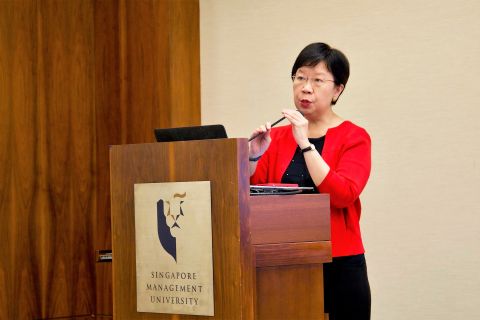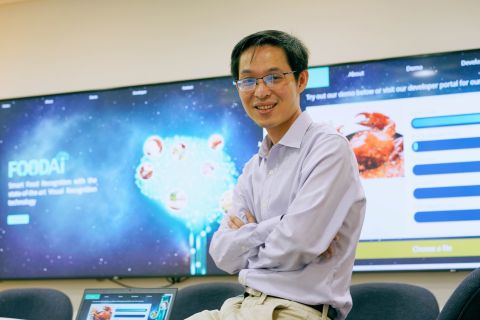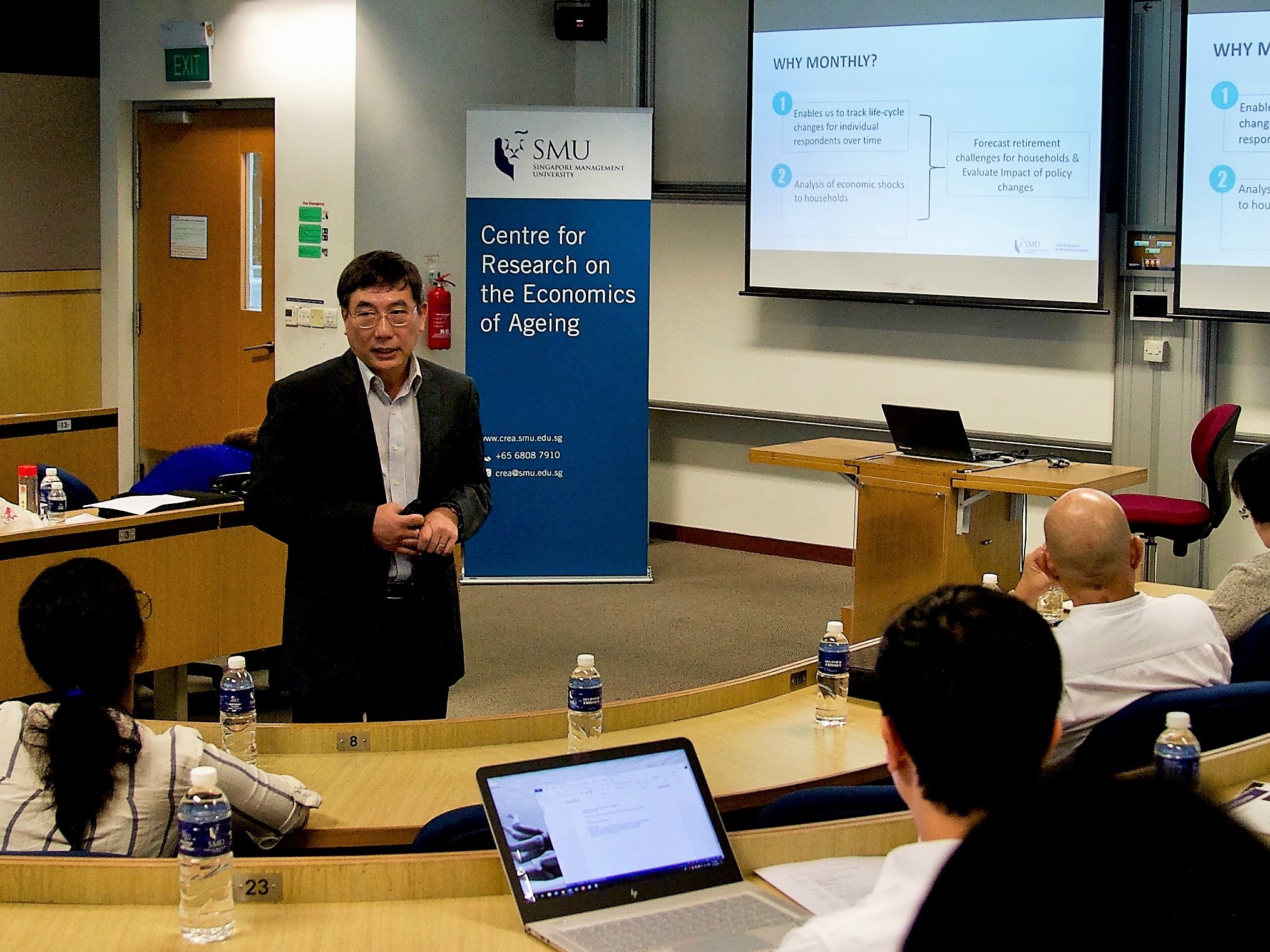
Above: Professor Benedict Koh of Singapore Management University Lee Kong Chian School of Business speaking at the CREA roundtable on ageing and financial preparedness in Singapore.
By Sim Shuzhen
SMU Office of Research & Tech Transfer – After a lifetime of earning a salary and putting money away for the future, the transition into retirement can be unsettling for many who are starting, for the first time, to draw on hard-earned nest eggs.
“At around age 60, households in Singapore turn from net savers into net spenders,” said Professor Benedict Koh of the Singapore Management University (SMU) Lee Kong Chian School of Business. “They fund that spending by decumulating their wealth; thus, how much they have accumulated is going to be very important in determining the kind of lifestyle they have during retirement.”
Professor Koh was speaking on 12 July 2018 at a roundtable on ageing and financial preparedness in Singapore, organised by SMU’s Centre for Research on the Economics of Ageing (CREA). At the session, CREA researchers presented the latest findings from the Centre’s flagship Singapore Life Panel® (SLP), an ongoing monthly survey of 10,000 Singaporeans aged between 50-70 years.
While most surveys collect data biannually, the SLP was designed as a high-frequency survey for understanding wealth, health, labour and retirement preparedness issues faced by older Singaporeans, added Professor Koh. “We want to track detailed life cycle changes of individuals over time, particularly to understand how households respond when they are hit with health or employment shocks. The frequency also allows us to understand how government policies aimed at mitigating these risks are bearing up,” he explained.
Saving while self-employed
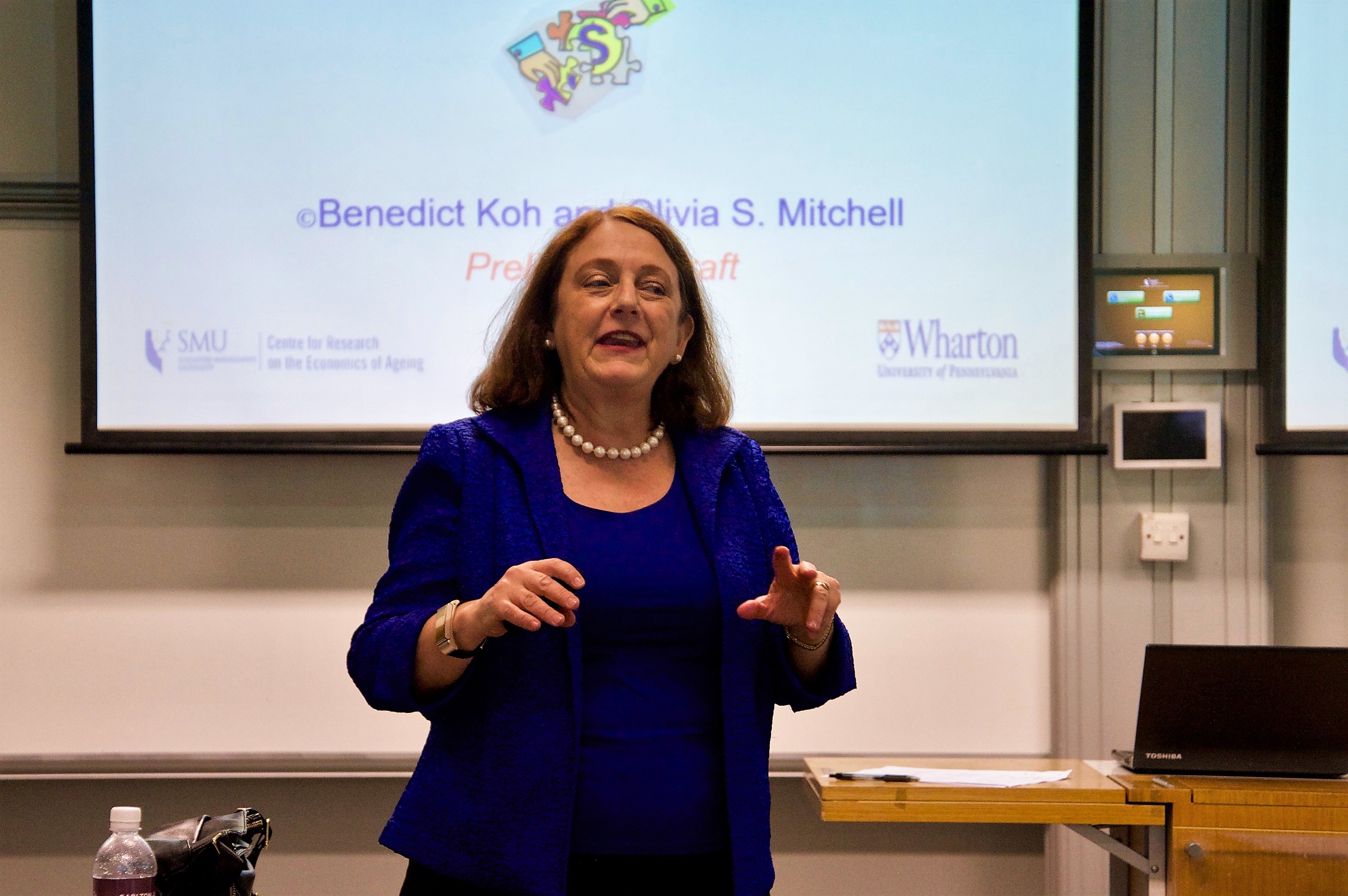
Above: Professor Olivia S. Mitchell of the University of Pennsylvania’s Wharton School speaking at the CREA roundtable.
As the gig economy grows, a major concern among policy makers is whether or not self-employed individuals will be sufficiently prepared for retirement, said Professor Olivia S. Mitchell of the University of Pennsylvania’s Wharton School. “In some countries, people get medical care through their employers. If you are your own employer, then you might not get medical care… if you worked with a company, there’s going to be more oversight over whether contributions are made to your retirement system,” she explained.
Drawing on SLP data, Professor Mitchell and her team are comparing the retirement preparedness of self-employed versus employed individuals in Singapore, where gig workers make up an estimated nine percent of the workforce, she said.
To the researchers’ surprise, survey data revealed that self-employed and employed workers are similar in many respects, said Professor Mitchell. For example, both groups show similar levels of financial literacy, achieving comparable scores on a questionnaire designed to measure understanding of interest rates, inflation and risk diversification. In self-assessments, both groups also reported similar levels of confidence in their own retirement prospects.
In terms of assets, self-employed and employed workers hold comparable levels of wealth both inside and outside of their Central Provident Fund (CPF) accounts, as well as portfolios that are equivalently diversified. Portfolio diversity is low in Singapore in general, with only a third of respondents holding a “minimally diversified” portfolio comprising cash, equity and bonds, added Professor Mitchell. “Most people hold CPF and a house… the bulk of Singaporean net wealth is not in complex assets, and [the picture is] pretty similar for the self-employed and the employed.”
These similarities could be good news. “What it says is that the self-employed are not in a really difficult situation compared to the employed; they are similar worker types,” said Professor Mitchell.
That the profiles of self-employed and employed people are so similar could indicate some degree of permeability between the groups, she added. “People may move between self-employment and employment over their work careers,” said Professor Mitchell, adding that she would be interested to track patterns of CPF contributions over time to determine whether or not these held steady despite career switches.
Minimising mistakes
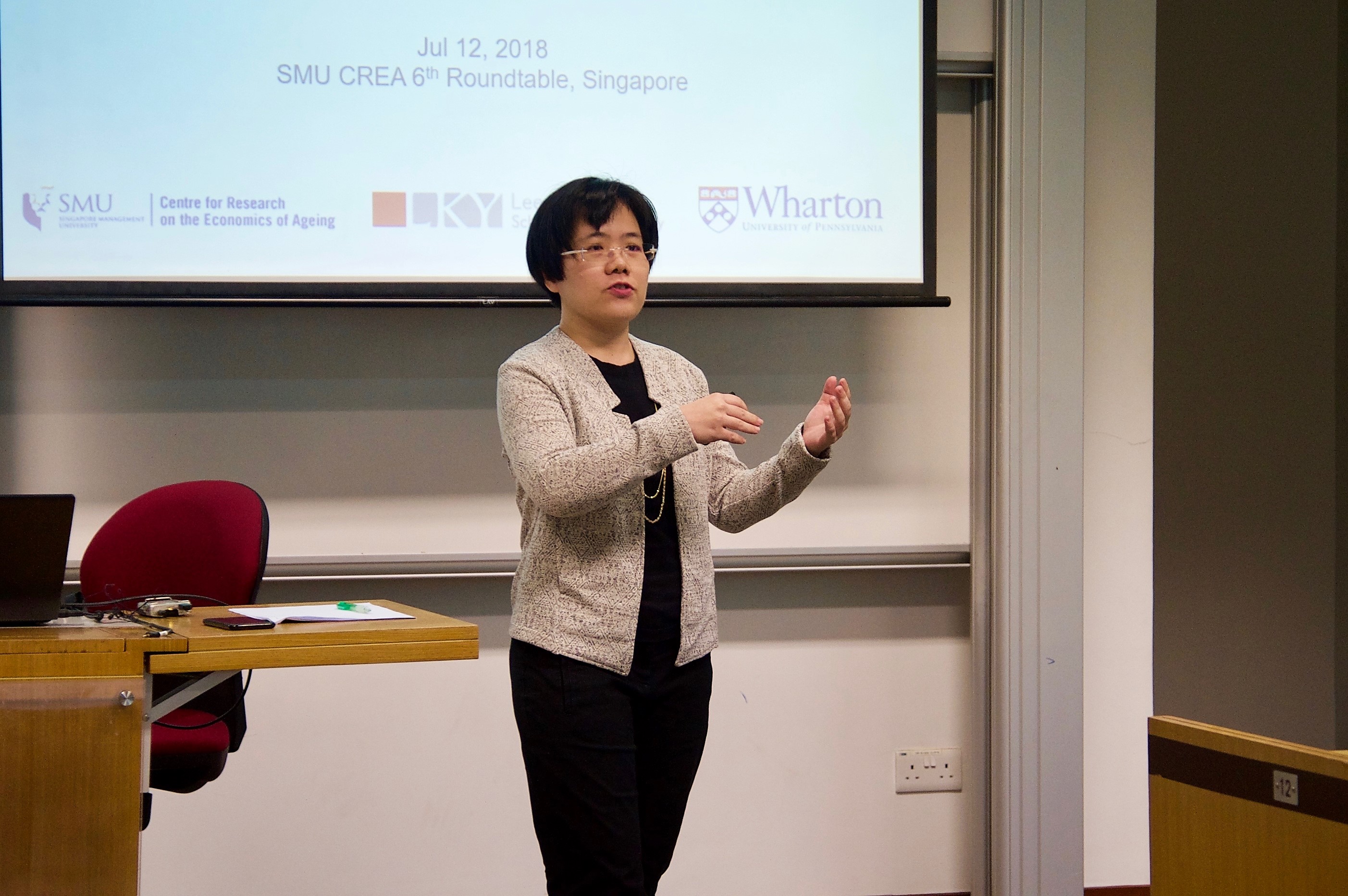
Above: Assistant Professor Joelle Fong of the Lee Kuan Yew School of Public Policy speaking at the CREA roundtable.
While people of all age groups make financial ‘mistakes’ such as incurring unnecessary credit card fees, choosing the wrong type of mortgage or failing to diversity asset portfolios, older adults warrant special attention, said Assistant Professor Joelle Fong of the Lee Kuan Yew School of Public Policy. “Older adults are of special concern… when you retire, you have more wealth than you had during your working years because you have accumulated a nest egg, and that's also when your pension monies become available to you.”
In her analysis of SLP data, Professor Fong found that financial mistakes among older Singaporeans were linked to financial literacy levels – respondents who scored better on financial literacy tests were less likely to forget to pay their credit card bills, and more likely to participate in the stock market and hold an age-appropriate share of risky assets. Independent of financial literacy, more highly educated respondents were also more likely to invest in stocks and to hold the right amount of risky assets.
These findings suggest that different categories of mistakes need to be addressed with different strategies, said Professor Fong. Credit card mistakes, for example, tend to be concentrated among a small minority with poor financial discipline, and are best tackled with highly targeted educational programmes. On the other hand, mass programmes in financial literacy would be a better approach to minimising investment and asset allocation mistakes, which are much more widespread among older Singaporeans.
Importantly, the independent effect of education level on investment-related decisions indicates it is never too early to start teaching finance-related concepts in classroom settings, emphasised Professor Fong. “If you want to help people invest in the stock market and make sound, age-appropriate investment decisions downstream, you should start early in the classrooms, and not wait till people are already working… you need to build up investment-making capabilities early in people’s lifetimes to have a downstream effect in their later years, when they are past 50,” she concluded.
Back to Research@SMU Issue 57
See More News
Want to see more of SMU Research?
Sign up for Research@SMU e-newslettter to know more about our research and research-related events!
If you would like to remove yourself from all our mailing list, please visit https://eservices.smu.edu.sg/internet/DNC/Default.aspx
